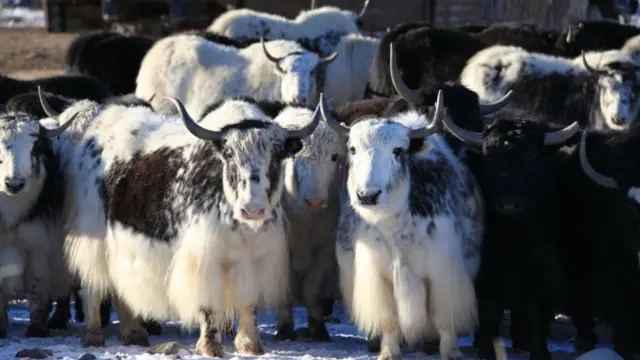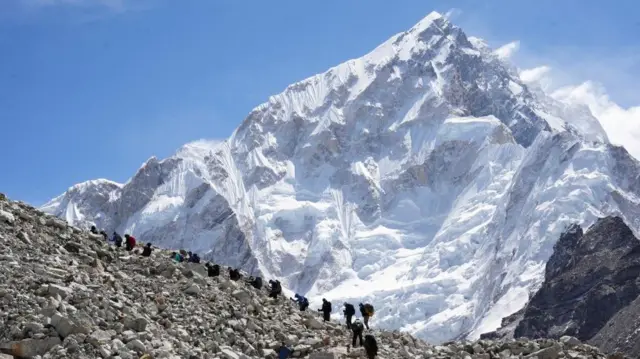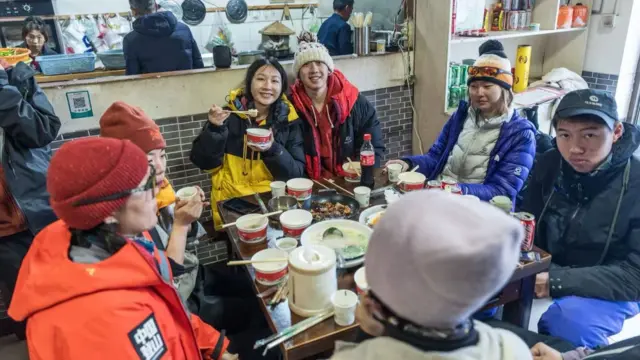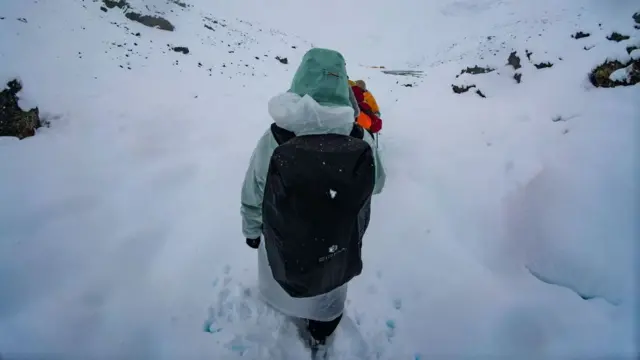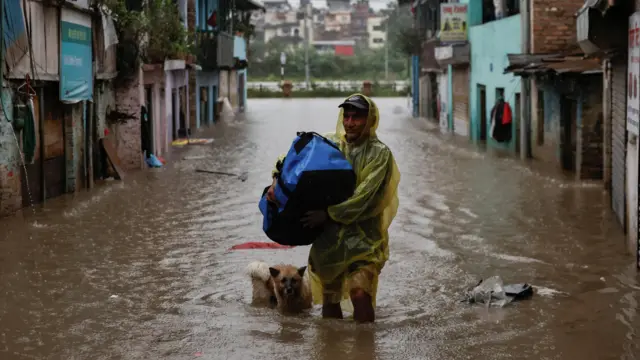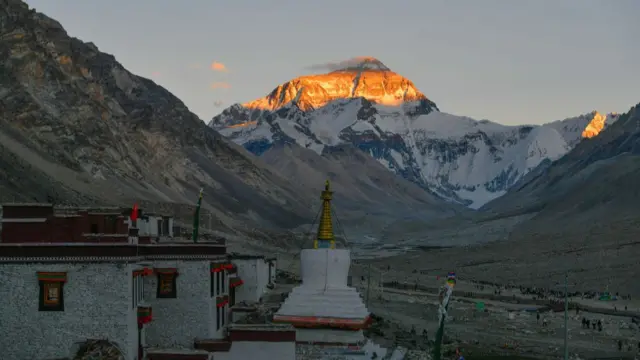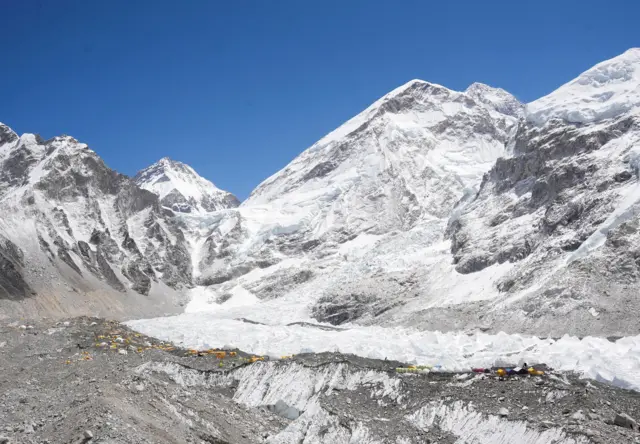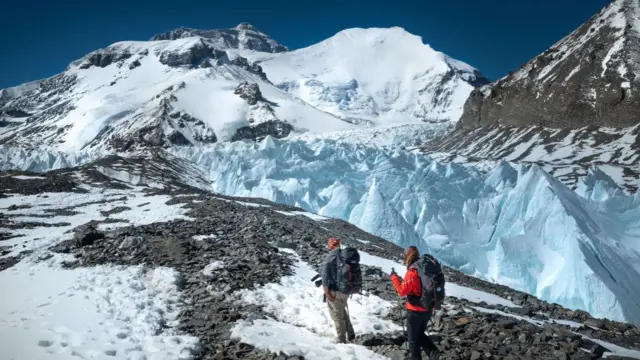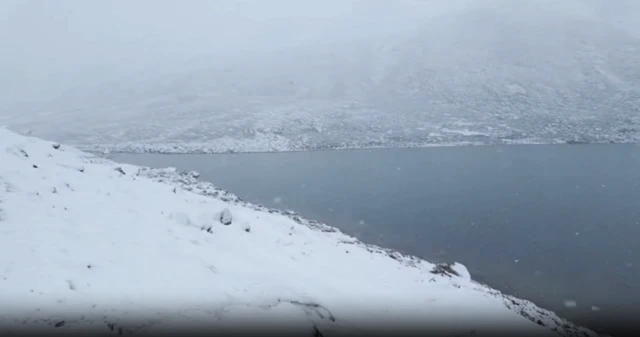Rescue efforts continue as hundreds still stranded near Everestpublished at 12:08 BST 6 October
Mount Everest: Rescue teams race to reach stranded hikers
Rescue efforts are ongoing to ensure hikers caught in a shock blizzard near Mount Everest make it to safety.
Heavy snowfall began on Friday evening and intensified on the eastern slopes of Everest over the weekend, trapping hundreds of hikers.
All those stranded have been contacted and 350 led to safety, according to Chinese state media, but more than 200 people are thought to still be in need of rescue.
“I’ve come to the Himalayas around 20 times, but I’ve never experienced weather like this,” seasoned hiker Dong Shuchang, 27, tells the BBC.
The sudden bad weather has also hit Nepal, where torrential rain and flooding has killed at least 47 people since Friday.
We're ending our live coverage now. You can stay up-to-date with the latest with our news story.

